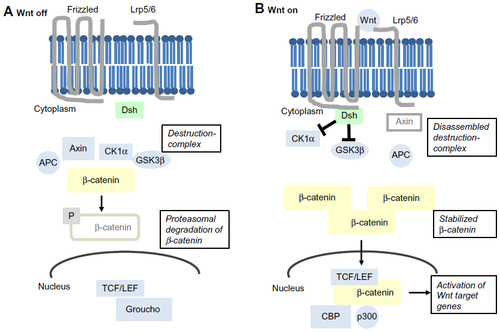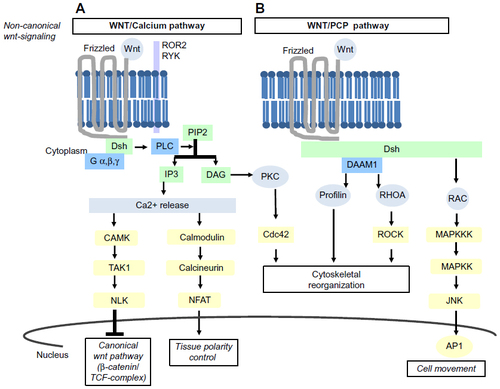Figures & data
Figure 1 Canonical Wnt signaling.
Abbreviation: APC, adenomtous polyposis coli.

Figure 2 Noncanonical Wnt signaling.
Abbreviations: RYK, receptor tyrosine kinase; ROR, receptor tyrosine kinase-like orphan receptor; ROCK, Rho-associated protein kinase; MAPKKK, mitogen-activated protein kinases; MAPKK, mitogen-activated protein kinases and AP1, activator protein 1.

Table 1 Clinically approved nonspecific Wnt antagonist
Table 2 Clinical trials of Wnt inhibitors/modulators
Figure 3 Schematic of Wnt inhibitors currently in clinical trials.
Abbreviations: Dsh, dishevelled; CK1α, casein kinase 1α; GSK3β, glycogen synthase kinase 3β; APC, adenomatous polyposis coli; TCF/LEF, T-cell factor/lymphoid enhancer factor; CBP, cyclic AMP response element-binding protein.

